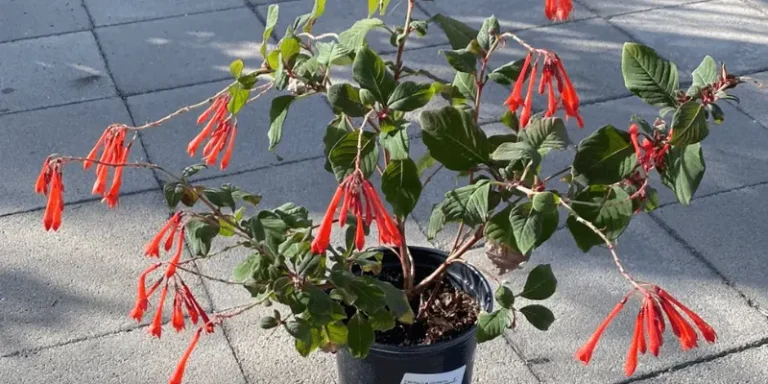Indoor Astilbe (False spirea) Care: How To Plant & Grow
Astilby, also known as “false spirea” or “false goat’s beard,” is a charming perennial plant admired for its beautiful flowers that come in a variety of colors, including white, pink, red, and lavender. I come These stunning flowers exude beauty, making Astilbe a favorite choice for indoor gardening. In this guide, we’ll explore the world of Astilbe and discover how to successfully grow and care for this enchanting plant within the confines of your home.
Astilbe is a plant species with deep roots in the forests and highlands of Asia. It is a member of the Saxifragaceae family and is primarily native to East Asia, particularly China, Korea, and Japan.
The name “Astilbe” is of Greek origin, where “a” means “without” and “stilbe” translates to “shine”. The name is aptly chosen because Astilbe is known for its preference for shady or partially shaded environments, thriving in conditions with less direct sunlight.
Astilbe’s introduction to the Western world began in the 19th century when European botanists and horticulturists were impressed by its distinctive feathery flowers and lush, fern-like foliage. This led to the plant being brought to Europe and North America, where it soon gained recognition as an ornamental garden plant.
Astilbe’s beautiful appearance and adaptability to different climates contributed to its widespread cultivation. Over the years, dedicated horticulturists and breeders have developed numerous varieties, each with its own unique characteristics, including variations in color, height, and growth habits. These efforts have significantly enriched the diversity of Astilbe species available to gardeners and enthusiasts.
In modern times, Astilbe has become a favorite choice for both indoor and outdoor gardening. Its ability to thrive in shady areas and its attractive, long-lasting flowers make it a valuable addition to landscaping and flower arrangements.
Astilbe Varieties
Astilbe Chinensis (Chinese Astilbe)
Chinese Astilbe, scientifically known as Astilbe Chinensis, is a resilient and visually appealing perennial native to China. Known for its vibrant cascading flowers in colors ranging from soft pinks to pristine whites, it adds a charming touch to gardens in late spring and early summer. Its saturated leaves add to its overall texture and charm. Chinese Astilbe thrives in a variety of growing conditions, making it versatile for a variety of garden settings. Its resilience allows it to tolerate harsh conditions, including drought, although it prefers consistently moist soil for optimum growth. Whether in shady woodlands or garden borders, Chinese stilbe is a valuable addition to outdoor spaces, suitable for both experienced and novice gardeners seeking beauty and hardiness.
Astilbe Thunbergii (Japanese Astilbe)
Japanese Astilbe, scientifically known as Astilbe Thunbergii, is an attractive perennial native to Japan. Among its beautiful presence are shady and woodland gardens, characterized by delicate, feathery flowers and finely textured foliage. Glossy, dark green leaves provide a lush backdrop for the enchanting floral blossoms, which come in soft shades of pink, lavender and white. Thrive in partial to full shade, Japanese Astilbe thrives in low light conditions, making it ideal for shady areas. Its preference for moist, well-drained soil ensures vigorous growth. Blooming from late spring to early summer, its feathery berries add whimsical charm. Whether as a focal point or within a shaded composition, the Japanese Astilbe epitomizes grace and elegance, a valuable addition to landscapes looking for a touch of refinement.
Astilbe Arendsii (Arendsii Astilbe)
Arendsii Astilbe, originating from hybridization efforts led by German horticulturist Georg Arends, is a robust perennial known for its dense flower berries in a variety of vibrant colors. Thrive in partial to full shade and adaptable to a variety of garden conditions, it adds brilliant color to garden landscapes, making it a reliable choice for gardeners seeking visual impact and versatility.
Astilbe Simplicifolia (Simplicifolia Astilbe)
Simplicifolia Astilbe, also known as Astilbe Simplicifolia, is a beautiful perennial native to Asia, known for its delicate foliage and beautiful flowers. This variety features finely cut, lacy leaves that create a lush mound, which serves as a beautiful backdrop for its airy flowers in soft shades of pink, lavender and white. are Thrives in partial to full shade, it does best in shady gardens and woodland settings, requiring consistently moist, well-drained soil. Ideal for rock gardens or as an understory plant, it adds sophistication and charm. Blooming in late spring to early summer, its flower petals sway gracefully in the breeze, adding to the allure of the garden. Simplicifolia Astilbe epitomizes delicate beauty and elegance, elevating shade gardens, rock gardens, and woodland landscapes with its intricate allure.
Astilbe Japonica (Japanese Astilbe)
Japanese Astilbe, scientifically known as Astilbe Japonica, is a beautiful and graceful perennial originating from Japan. It is distinguished by its finely textured, dark green foliage that forms a lush mound, providing a stunning backdrop for its delicate flower bridges. These plums with small feathery flowers in pink, red and white colors add sophistication and beauty to the garden.
Thrive in partial to full shade, Japanese stilbe is perfect for the shade garden, where it adds beauty and color. It prefers consistently moist, well-drained soil for optimal growth.
Japanese Astilbe typically blooms in late spring to early summer, offering color and softness to the garden. Its feathery berries create a calming and inviting atmosphere, making it a valuable addition to any garden landscape. Whether as a focal point or as part of a garden composition, Japanese Astilbe add a sense of elegance while elevating the aesthetics of outdoor spaces.
Astilbe Hybrid Varieties
Astilbe hybrid varieties, the result of careful crossbreeding, offer a variety of colors and growth forms, making them versatile garden choices. They thrive in partial to full shade, prefer consistently moist soil, and exhibit varying bloom times with extended flowering seasons. This diversity in color, shape and adaptability allows for creative garden designs to suit different preferences. Whether as border plants, ground covers, or focal points, Astilbe hybrids enhance garden aesthetics with their dynamic and ever-changing presence.
Indoor Astilbe: How To Plant & Grow
Planting and growing Astilbe, is a rewarding endeavor that adds beauty and color to your garden. To begin with, choose a suitable location with partial to full shade, as these plants thrive in low light conditions. Make sure the soil is consistently moist and well-drained, as Astilbe prefers a moist environment.
Start by digging a hole that is twice the width of the root ball and the same depth. Space multiple Astilbe plants about 18 inches apart to allow for proper air flow and growth. Place the plant in the hole, making sure the crown (where the stem meets the roots) is level with the soil. Fill the hole well with soil and water.
Maintaining a layer of mulch around the base of the plant helps retain moisture and regulate soil temperature. Water your Astilbe regularly to keep the soil consistently moist, especially during dry spells.
As they grow, these perennials will reward you with their feathery flowers, which typically bloom in late spring to early summer. Pruning spent flower heads and pruning plants in the fall will promote healthy growth the following season. With proper care, your Astilbe will thrive and contribute to the beauty of your garden year after year.
Astilbe (False spirea) Indoor Care
Caring for Astilbe indoors, involves providing the right conditions to maintain their health and vitality. Start by placing your potted Astilbe in a bright, indirect light spot. These plants thrive in well-lit areas but should be protected from direct sunlight, which can damage their delicate foliage.
Constant humidity is essential for indoor Astilbe. Make sure the pot has adequate drainage to avoid waterlogging, but don’t let the soil dry out completely. Check the top inch of soil and water regularly when it feels dry to the touch.
Astilbe benefits from high humidity levels, which can be achieved by misting or by placing a humidity tray nearby, especially in low humidity environments.
During the growing season, feed your indoor Astilbe with a balanced liquid fertilizer every 4-6 weeks to support healthy growth and blooms.
Watch for any signs of pests or diseases, such as spider mites or powdery mildew, and treat them immediately. With these care steps, your indoor Astilbe will thrive, adding its unique charm to your indoor spaces.
Astilbe’s Benefits
The Astilbe, offers countless benefits to gardens and the environment. Its ornamental beauty, with a wide array of colorful and feathery flowers, enhances the aesthetics of the garden. Astilbe’s shade tolerance makes it an excellent choice for low-light areas. Additionally, its nectar-rich flowers attract pollinators, benefiting local ecosystems. This perennial plant is relatively low-maintenance and versatile once established, suitable for a variety of garden settings. With varying bloom times, it adds color and interest to the garden throughout the season. Finally, Astilbe’s strong root system helps control erosion, making it an eco-friendly addition to landscapes.
Frequently Asked Questions (FAQs)
1. Where does Stilby thrive?
Astilbe thrives in partial to full shade. These plants are suitable for shade gardens, woodland areas or places with limited direct sunlight. They prefer consistently moist, well-drained soil and can tolerate varying levels of moisture.
2. What is astilbe used for?
Astilbe is primarily used for horticultural and landscape ornamental purposes. Its attractive, feathery berries in a variety of colors make it a popular choice for adding beauty and richness to gardens. Some people also use cut Astilbe flowers in floral arrangements. Although it has no notable practical uses, its visual appeal enhances outdoor spaces.
3. What does Stilby flower mean in love?
The Astilbe flower is not traditionally associated with love or romantic symbolism like some other flowers. Instead, it is generally appreciated for its elegance and beauty. Flowers like roses and lilies are more commonly associated with love and romantic gestures.
4. What does the flower astilbe mean?
Astilbe flowers are usually associated with feelings of patience and dedication. This meaning stems from their ability to thrive in shady areas, symbolizing endurance and perseverance in the face of challenges. Although not as widely known for their symbolism as some other flowers, Astilbes can be appreciated for their aesthetic qualities and broad message of persistence in floral arrangements and gardens.


